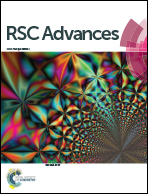Sulfidogenic-corrosion inhibitory effect of cationic monomeric and gemini surfactants: planktonic and sessile diversity
Abstract
A cationic monomeric surfactant (CMS) and a cationic gemini surfactant (CGS) were successfully synthesized and characterized. A comparison of the CMS and CGS metal corrosion inhibitory effects was carried out on the basis of protecting a metal surface from cultivated salinity (3.18% NaCl) and an environmental sulfidogenic bacterial activity in a reactor's bulk phase (planktonic) and on a metal surface (sessile). Environmental sulfidogenic bacterial consortia were originated from an oil-field water tank. The sulfidogenic bacterial activities were evaluated based on redox potential and sulfide concentrations in the reactor's bulk phase. In addition, changes in biofilm structures and constituents and the metal corrosion rate were determined to estimate changes on metal surfaces. Results in the reactor's bulk phases showed that at high surfactant (CMS, CGS) concentrations, a considerable decline in the redox potential was observed and the sulfide productivity was completely suppressed. The synthesized surfactants showed the highest metal corrosion inhibition efficiencies of 92% and 94% at concentrations of 10 mM and 1 mM for the CMS and the CGS, respectively. In addition, the synthesized CMS and CGS showed nonspecific antibacterial activity against Gram-positive and Gram-negative bacterial-standard strains.


 Please wait while we load your content...
Please wait while we load your content...